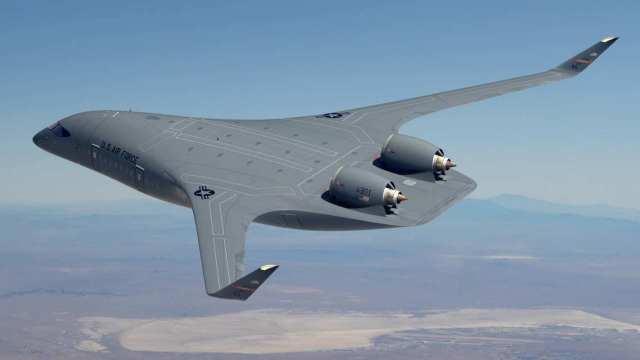The US Air Force has announced that it has chosen aviation startup JetZero to design and assemble a full-size demonstrator of a promising tanker aircraft with a combined body-wing (BlendedWingBody, BWB). The goal is for the aircraft, made according to the "flying wing" scheme and already received the unofficial designation XBW-1, to begin flying by 2027.
Secretary of the U.S. Air Force Frank KENDALL announced the choice of JetZero at a recent event organized by the Aerospace Forces Association. The Service hopes that this initiative will pave the way for the creation of future tanker and cargo aircraft that are significantly more fuel-efficient than existing types with more traditional designs.
Among other advantages, they can also have an even greater load capacity with a larger internal volume. It is expected that this would help justify the requirements for the air refueling System (NGAS) and next-generation air transportation (NGAL) programs, which the US Air Force is still in the process of finalizing.
As stated in a separate press release, "aircraft with a combined wing have the potential to significantly reduce fuel consumption and expand global coverage."
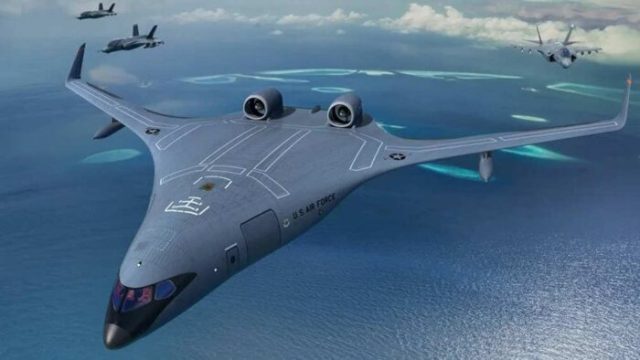
Visualization of the JetZero BWB concept
The initiative is led by the U.S. Air Force's Office of Energy, Installations, and Environment in collaboration with the Department of Defense Innovation Department of the Department of Defense (DIU), which is tasked with "accelerating the introduction of advanced commercial technologies in the armed forces." According to a US Air Force press release, in the National Defense Act for Fiscal year 2023, the US DoD plans to invest $235 million over the next four years to accelerate the development of this transformational dual-use technology. Additional funding will also come from other sources.
The Air Force and DIU considered applications for more than a year and by July 2023 narrowed the circle to two competitors: Boeing and JetZero. JetZero is the only company that has previously publicly confirmed that for the new initiative, BWB is offering a design that it calls the Z–5. In this project, the contractor cooperates with Northrop Grumman. A subsidiary of Northrop Grumman, Scaled Composites, which is distinguished by advanced aerospace design and rapid prototyping capabilities, provides special support in this work.
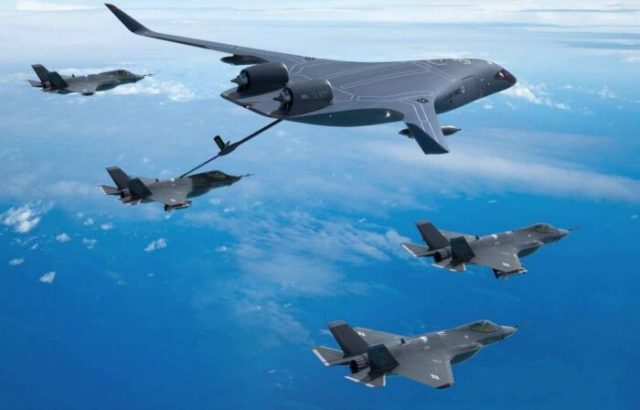
JetZero's BWB concept, configured as a tanker aircraft with F-35A fighters
The official request for information, published in 2022, outlined the main objectives of the BWB project. At the center of the project is a design that would be at least 30% more aerodynamically efficient than a Boeing 767 or an Airbus A330. These two commercial airliners, in particular, are the basis of the current USAF tankers Boeing KC-46A Pegasus and the multi-purpose military transport aircraft Airbus A330 (MRTT).
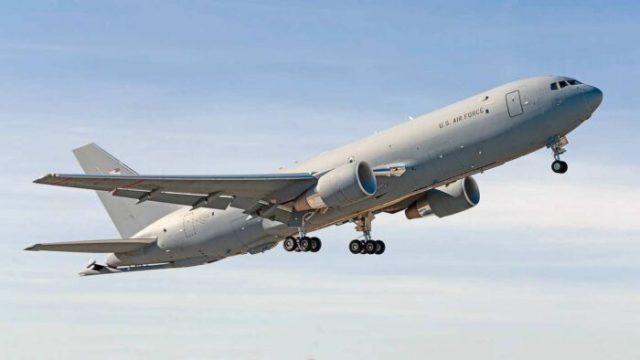
KC-46A Pegasus tanker aircraft of the US Air Force
Combined with unspecified advanced engine technology, the BWB design is expected to result in a significant increase in fuel economy. This, in turn, will allow future tanker aircraft and other military transport aircraft of the US Air Force, based on the basic design concept, to make long-distance flights. At the same time, it will be possible to transport a similar or even potentially larger payload than is possible with today's aviation fleet.
BWB designs are not new, and over the past 30 years, the Air Force has repeatedly studied designs with such a configuration, including inconspicuous types. However, since the US Armed Forces are currently mainly focused on preparing for a potential major conflict in the Pacific region against China, there are new urgent requirements for air refueling and long-range airlift capabilities.
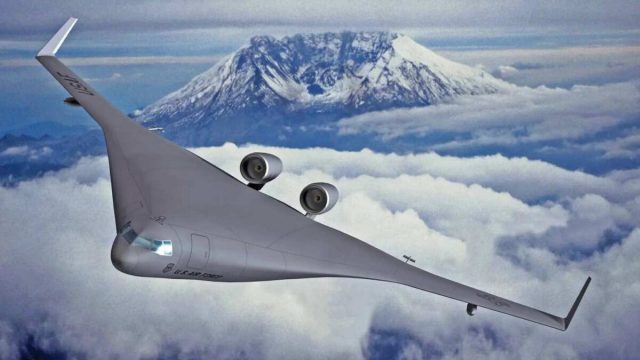
Visualization of the BWB concept from Boeing
The Air Force has also made it clear that they need more resilient tanker aircraft and other air transport to support future high-intensity combat operations. Although this is not a stealth aircraft by default, the layout of the combined wing can be more easily adapted in this regard, and some design options may have "less observability" from certain angles in both IR and radio frequency bands. Other improved survivability characteristics can also be added to the design of BWB next-generation air tankers or cargo aircraft, which will make it much more difficult for them to be detected by the enemy at long distances.
In general, American experts conclude, in the coming years it will be very interesting to learn and see more about the XBW-1 demonstrator from JetZero, on the eve of the expected first flight of the aircraft in 2027.
According to the materials of the resource thedrive.com/the-war-zone
